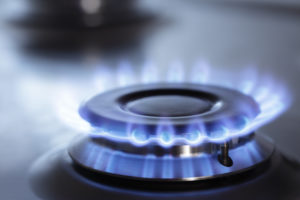 Natural gas futures advanced on Thursday amid speculation a government report due later today may show US gas stockpiles depleted at a faster than the 5-year average pace, while they are already at a 10-year seasonal low. The energy source was also supported by weather forecasting models that called for below-normal temperatures across many densely populated US areas, stoking demand for the power-station fuel, as Americans crank up the heating.
Natural gas futures advanced on Thursday amid speculation a government report due later today may show US gas stockpiles depleted at a faster than the 5-year average pace, while they are already at a 10-year seasonal low. The energy source was also supported by weather forecasting models that called for below-normal temperatures across many densely populated US areas, stoking demand for the power-station fuel, as Americans crank up the heating.
On the New York Mercantile Exchange (NYMEX), natural gas for delivery in April rose by 1.47% to trade at $4.590 per million British thermal units by 09:53 GMT. Natural gas futures hit a session high at $4.598 per mBtu, while day’s low was touched at $4.559 per mBtu.
Natural gas was down 26% last week, the biggest drop since December 1996 and settled 5.5% lower in February, after adding 26% last year, the best performance since 2005 and second straight annual advance.
US gas inventories levels
Early withdrawal estimates range from 140 billion cubic feet to 174 billion cubic feet, compared to 149 billion cubic feet draw a year ago and well above the five-year average drop of 105 billion. EIA is scheduled to release its weekly US gas storage report today at 15:30 GMT.
The Energy Information Administration reported last Thursday that US natural gas inventories fell by 95 billion cubic feet in the seven days through February 21st, below the median analyst’ forecast of 102 billion cubic feet in a Bloomberg survey.
Total gas held in US underground storage hubs fell to 1.348 trillion cubic feet, the lowest for this time of the year since 2004. US gas stockpiles were 40.2% below last year’s amount of 2.253 trillion cubic feet during the comparable week. The deficit to the five-year average widened to 34.5%, up from 33.9% a week earlier.
On February 24, the US investment bank Goldman Sachs lowered its end-of-March inventory levels’ forecast for a third time to 1 trillion cubic feet, down from 1.2 trillion. The bank previously trimmed its forecast to 1.2 trillion from an earlier estimate of 1.39 trillion cubic feet, while the initial estimate was 1.61 trillion cubic feet.
Short-term weather outlook
NatGasWeather.com reported on March 6th that few days of milder conditions are expected to push into the central and easter US, temporarily easing natural gas and heating demand. Today, a weather system will track through the Southeast, bringing moderate to heavy showers and isolated thunderstorms.
However, after the brief warm-up a weak Canadian cool front is expected to track across the northern US Saturday into Sunday, bringing below-normal temperatures and light snowfall. Another brief warm-up is expected to follow Monday into Tuesday before a more impressive and longer-lasting cold outbreak blasts deep into the central and eastern US by the middle of next week.
According to the website, temperatures 10-25 degrees Fahrenheit below-normal will again become anchored over the highest-consumption states of the northern US, leading to another surge of strong natural gas and heating demand.
Extended forecast
NatGasWeather.com’s extended forecast for the period March 13-19th called for a fresh cold blast to start the outlook period and to maintain below-normal temperatures across much of the northern US. Several winter storms are predicted to track across the US, each one of them bringing reinforcing doses of cold Canadian air.
The weather pattern that will develop late next week will be quite cold, especially over the Great Lakes and Northeast and will last for the first 5 days of the outlook period as reinforcing shots of cold air continue. However, at the end of the period warmer conditions are expected over the northern US.
The pattern will remain quite active and colder conditions with winter storms will follow. Chilly temperatures are expected over most of the US late next week and will hold for several days. According to the website, fairly strong natural gas and heating demand can be expected during the outlook period.
According to AccuWeather.com, temperatures in Cleveland on March 14th may bottom at 19 degrees Fahrenheit, 12 beneath average, while readings in Detroit may plunge to 20 degrees Fahrenheit, below the average of 29. The low in Boston is expected to be 20 degrees Fahrenheit, 10 below normal.
When cold weather is expected, natural gas surges as increased electricity demand to power air-conditioning calls for more supply of the fuel, which is used for a quarter of U.S. electricity generation. Above-average readings in the winter season have the opposite effect. Consumption usually picks up from November through March. According to the Energy Information Administration, power generation accounts for 32% of U.S. gas demand and 49% of U.S. households use the energy source for heating.





